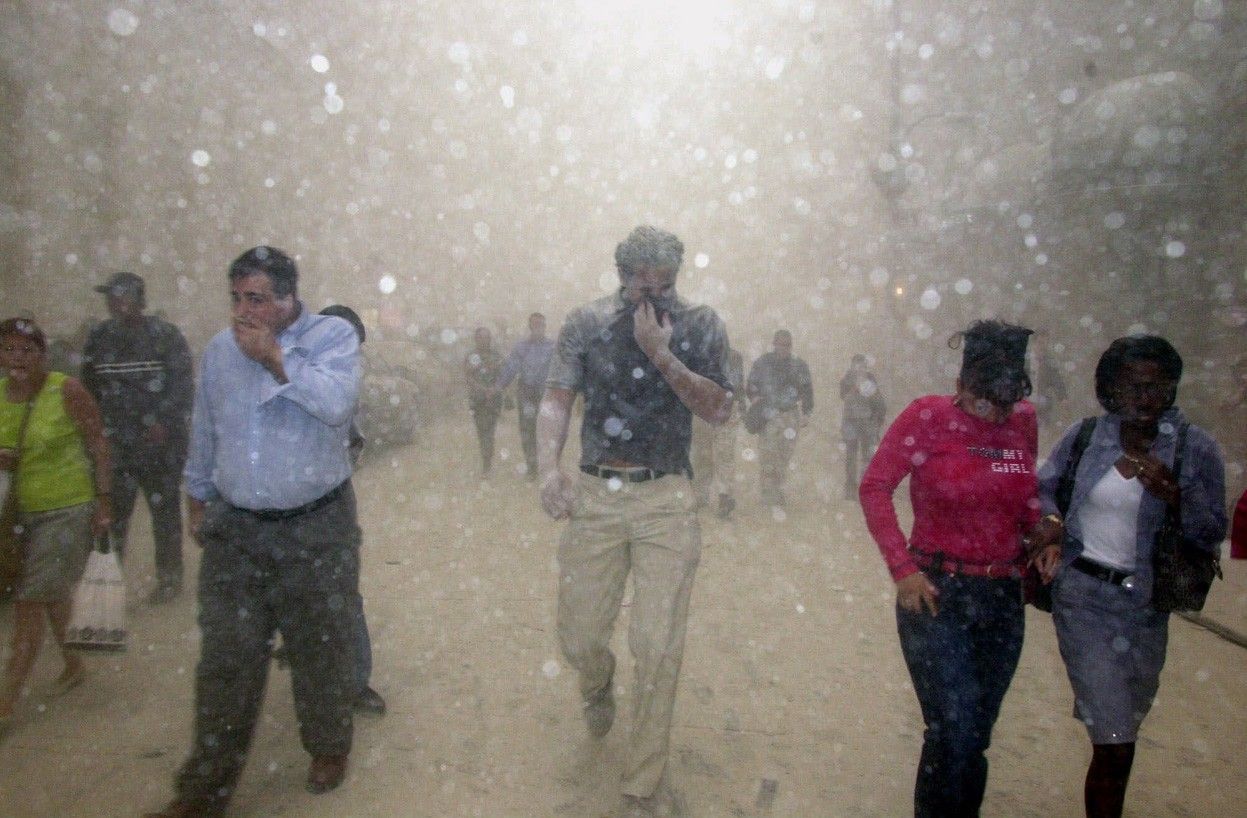+64 27 231 0193
jonathan@farsightglobal.co.nz
Managing a Mass Casualty Event: Tips for a Senior Leadership Team

On 15 March 2019 the city of Christchurch, and the country of New Zealand, was devastated by the actions of a single individual who entered two Mosques during Friday prayers for the singular purpose of advancing an ideology of hate, ignorance and division. Using multiple firearms he chose to shoot and kill as many individuals as he could who looked differently, spoke differently, and prayed differently to himself and the beliefs he held. Innocent New Zealand citizens and visitors who were praying peacefully had lives and bodies broken, and families were devastated. A community continues to weep, grieve, and reflect on the wider ramifications of such an act for the city of Christchurch and the country as a whole. March 15 was an event so far outside most peoples’ expectations in New Zealand it compounded the shock and personal impact, but also the determination for it to not divide but unite, to learn and address what can be done in wider society to ensure the safety of the community as a whole no matter the faith, nation of origin, or language spoken. In this New Zealand will continue to reflect for some time, and the ripple effects of the worst mass casualty event in modern New Zealand history will continue in individual, interpersonal, academic and media dialogue for many years.
Putting aside the political, social, and individual trauma – but not taking from it – an event of this type has significant implications beyond those directly impacted as victims, witnesses, and friends and family of those injured and killed. Ongoing mass media imagery, social media commentary, conversations between friends, contributions from commentators, and daily reminders ensure a continuing exposure to the events that have taken place. In many respects the impact of these reminders can be positive – sharing, connectedness, validation, provision of necessary and desired information, empathy, support, love and security. At other times they can prove offensive or harmful over time – re-experiencing, recriminating, blameful, unsupportive, prejudiced, ignorant. No matter the immediate impact the events of a mass casualty are lasting and go beyond those initially affected and to which support and attention is typically addressed. This is made moreso when such an event triggers reminders of previous trauma (e.g. Christchurch earthquake cluster late 2010-2011), even if historical events have been largely resolved and managed effectively for most but still with significant impact as one would expect.
There is much in such events that can effect businesses and organisations, often in a way they may not have expected if the business is not directly involved in some way (e.g. physical proximity, staff involvement directly and indirectly, sale and movement of equipment and/or supplies). While the emphasis is often on individual recovery, organisations are collections of individuals who might be immediately involved, impacted in different ways and who are undertaking tasks that may be directly effected by what has taken place (e.g. change in transport routes, loss temporarily or permanently of a key member of a team, unavailability of information/services due to changes in priorities of stakeholders, impact on the community in which we live and work). No matter the situation, preparation undertaken, or specific impact there are some key pointers and principles all organizational leaders need to be cognizant of when planning how to support their staff post an event of such magnitude:
1) Deal with immediate needs: Don’t think too far ahead least it hinder initial response priorities. The immediate needs are individual safety and dealing with injuries, physical security of our team members, obtaining accurate information as to what has happened (seek corroborating sources), communication between team members and families, and managing initial confusion and intense emotion. The first 48 hours are critical in enabling the ability to plan a response, ensuring our team is taken care of, and clarifying who is directly impacted, how, and what is needed to assist their immediate needs. Clear and consistent communication from executive management is critical, but no educated guessing even if well intended.
2) Manage fatigue: Responding to a major emergency is exhausting both physically and emotionally. The initial adrenalin, need for information, support provided, confusion, and desire to be available and be present is only possible for so long before performance degrades. Look to rotate staff and manage rest and recovery. It’s easier said than done as we often don’t want to ‘not be involved’, may be in a critical position of responsibility or are motivated by the emergency nature of what has happened at the price of appropriate rest (happens more than people realise).
3) Make use of flexible psycho-social support systems: Yes, this includes EAP (Employee Assistance Programmes and similar types of services) but make psychological health professionals available but not mandatory early on. Psycho-social support includes provision of information (including educational material about recovery and self-care), taking care of physical needs, enabling support of colleagues, ensuring opportunities for sharing and contact with others. It also requires the ability to connect culturally, linguistically, and empathically with individuals who have had a rare and significantly impactful experience on themselves and/or their loved ones. Support isn’t just seeing a psychological professional, although that’s an important part. It can also include things such as peer support, shift debriefs, care packages, social gatherings, and connectedness between individual friends and family that adds value to those impacted and those who care about them that reinforces sharing, safety and positive coping.
4) Plan for on-going support: Everyone responds in different ways and significant personal impact often occurs after initial attention has waned. In-depth educational sessions after 2-4 weeks are usually better than early on when initial response and adaptation dominates, and the key information needed is around what is required to fulfill responsibilities and basic reminders and reinforcers around self-care and care for others. People will respond in different ways, including to an event triggering maladaptive coping for those already carrying a big load, so don’t be surprised if psycho-social support services are accessed down the track that are linked to an event you thought everyone had basically moved on from. Individuals impacted medium- or longer-term can feel isolated as the nature of conversations around them change and it is important to ensure they feel accepted and connected as best we can.
5) Triage those directly impacted: Identify based on involvement and needs and ensure support continues and is available. A planned and mandated semi-regular check-in with a psychological professional, with protocols in place for what is reported to human resources (health information is private but the workplace has a role in being aware of work-related health needs in a discrete and agreed upon manner) is recommended. This is to ensure coping and recovery is on track and if off track that specific support and adjustment made. Often people think they’re recovering well, and they are, but get much more out of a regular check-in with a psychological professional than they realise – reflection, monitoring, self-care-accountability, safe space to disclose and discuss, and mandated self-time that they rarely prioritise for themselves.
6) Don’t over-pathologise initial responses: While it can be tempting to focus on early signs of poor coping and possible early indicators of long-term pathology it is best to enhance positive recovery and adaptation strategies during early stages. Symptom check lists and screening tools can be very helpful but are best utilized selectively and after initial needs have been met. Blanket application early on can generate expectation by some that may not be warranted on later reflection, but it’s good to have screening tools available to meet individual triage needs and monitor adaptation and recovery. Long-term development of conditions such as post-traumatic stress disorder are very dependent on the context of the event and the nature of the individual involved and their level and type of exposure. The combination of involvement, impact, support and recovery protocols in the initial two weeks play a significant role in mitigating ongoing trauma-type reactions of a debilitating nature.
7) Leader self-care: Leaders are human and have limits too. Leadership involves a lot of discretionary time and voluntary commitment when done well. During a critical incident the role of leaders as decision-makers, information providers, colleagues and counsellors, and wise heads takes more energy and time than is often expected. Don’t forget to practice when you can what you are encouraging other team members to do. None of us are immune to fatigue, grief, doubt, anger, or distress.
8) Beware of over-reliance on emails for information: Email is efficient and effective but sometimes a human touch is needed. The transactional nature of emails has a place, especially when key information is needed to be mass delivered quickly, simply, and reliably. But, don’t underestimate the benefit of meeting people in person, education sessions with leaders present, and the value of sharing, discussion, and connection that comes with humanizing our communication delivery.
9) Enhance existing coping and positive self-management: While there can be a temptation to intervene with support services early on, and there is some merit in this (better to have a resource and not need it than need it and not have it), the most effective approach is to identify how existing coping and positive self-management can be maximised and enabled, and apply resources in this area. That may mean changing established procedures to allow more flexibility, autonomy and alterations to the way things are normally done to allow adaptation to immediate needs. People are inherently adaptable – sometimes poorly but most of the time effectively over time – and we need to consider how we enhance and empower that adaptation rather than interfere with its natural course. Some professional guidance and advice in this space is advisable with regards to those showing early signs of poor adaptation, especially after the initial emergency response period has been completed. Listen to what your team needs, enable positive self-care and decision-making (including by yourself), but ensure there’s an awareness and safety net in place for those who are struggling so we can support them with what they need.
10) Pay attention to pre-existing levels of personal and work stress (load and complexity): The largest determinant of post-event psychological functioning tends to be an individual’s level of pre-event psychological functioning. There are, of course, exceptions to this based on level of involvement, direct impact and existing vulnerability that an individual may or may not be aware of (e.g. previous trauma experience and/or the personal salience of an experienced event). However, as a general rule of thumb pre-existing levels of stress, patterns of coping, and health status are the best predictor of long-term recovery providing that the event response and recovery protocols implemented are methodologically sound, appropriately resourced, adaptable to circumstance, and meet individual needs.
JOHNATHAN BLACK
Chartered Organisational Psychologist & Founding Director of Farsight Limited
Jonathan is a registered psychologist with the New Zealand Psychologists Board and a Chartered member of the Institute of Organisational Psychology with the New Zealand Psychological Society. Specialising in conflict, communication, safety, performance and leadership he provides a broad range of services in these and other fields and his advice has been sought across Australasia and Europe.

